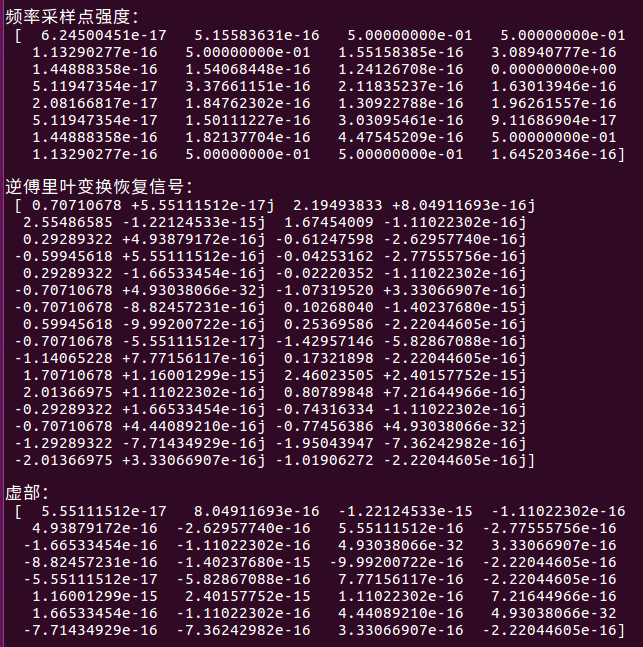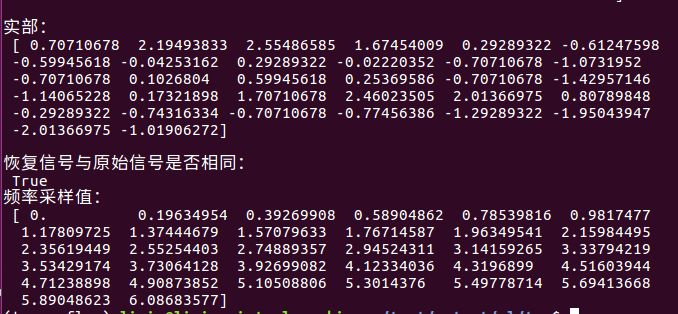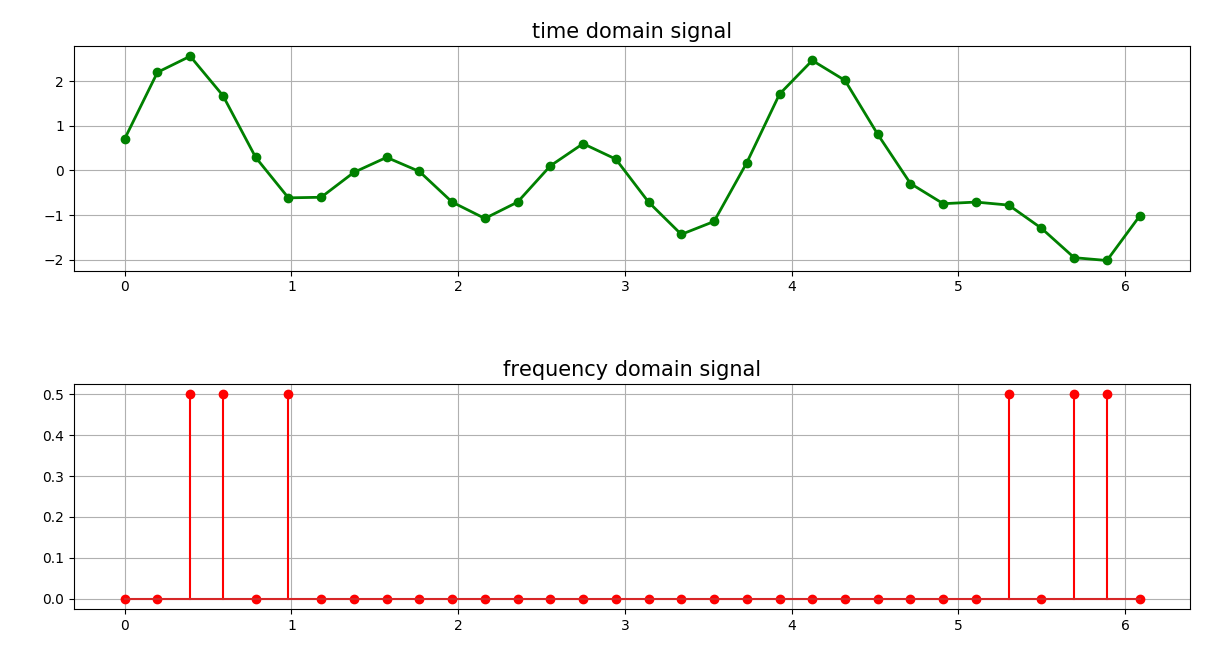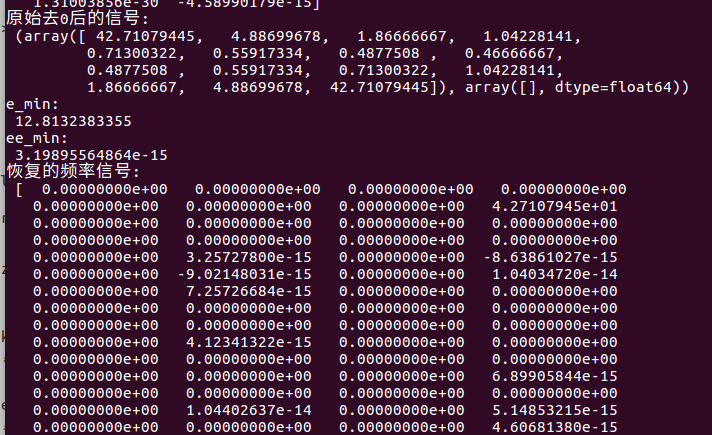python模擬離散傅立葉變換
阿新 • • 發佈:2019-02-14
code:
import numpy as np import matplotlib as mpl import matplotlib.pyplot as plt # 產生三角波的函式 def triangle(size, T): # 生成-1到1之間的size個時間點 t = np.linspace(-1, 1, size, endpoint=False) # 這裡使用y=|x|函式生成倒三角波一樣的影象 y = np.abs(t) # 上面已經生成一個三角波影象,然後進行復制T個 y = np.tile(y, T) - 0.5 # 接著吧上面總共取樣的T個週期的所有采樣點集合到x變數 x = np.linspace(0, 2 * np.pi * T, size * T, endpoint=False) return x, y # 把取樣點的0點去掉 def delete_zero(f): f1 = np.real(f) f2 = np.imag(f) # 設定一個極小接近0的值 e_min = 1e-5 # 同上面的極小值比較去0 return f1[(f1 > e_min) | (f1 < -e_min)], f2[(f2 > e_min) | (f2 < -e_min)] if __name__ == "__main__": x = np.linspace(0, 2*np.pi, 32, endpoint=False) print('時域上訊號取樣值:\n', x) # y = np.sin(2*x) + np.sin(3*x + np.pi/4) + np.sin(5*x) y = np.sin(x) N = len(x) print('總共取樣點個數:\n', N) print('\n原始訊號值:\n', y) f = np.fft.fft(y) print('\n頻域上訊號取樣值:\n', f/N) a = np.abs(f/N) print('\n頻率取樣點強度:\n', a) iy = np.fft.ifft(f) print('\n逆傅立葉變換恢復訊號:\n', iy) print('\n虛部:\n', np.imag(iy)) print('\n實部:\n', np.real(iy)) print('\n恢復訊號與原始訊號是否相同:\n', np.allclose(np.real(iy), y)) plt.subplot(211) plt.plot(x, y, 'go-', lw=2) plt.title('time domain signal', fontsize=15) plt.grid(True) plt.subplot(212) w = np.arange(N) * 2*np.pi / N print('頻率取樣值:\n', w) plt.stem(w, a, linefmt='r-', markerfmt='ro') plt.title('frequency domain signal', fontsize=15) plt.tight_layout(2) plt.subplots_adjust(top=0.9) plt.grid(True) plt.show() # 模擬三角鋸齒波 x, y = triangle(30, 7) N = len(y) f = np.fft.fft(y) print("原始的三角頻域訊號:\n", np.real(f), np.imag(f)) print("原始去0後的訊號:\n", delete_zero(f)) a = np.abs(f/N) f_real = np.real(f) e_min = 0.3 * f_real.max() print("e_min:\n", e_min) # 去0處理 f_real[(f_real < e_min) & (f_real > -e_min)] = 0 f_imag = np.imag(f) ee_min = 0.3 * f_imag.max() f_imag[(f_imag < ee_min) & (f_imag > -ee_min)] = 0 print("ee_min:\n", ee_min) new_f = f_real + f_imag new_y = np.fft.ifft(new_f) new_y = np.real(new_y) print("恢復的頻率訊號:\n", new_f) print("恢復的去0後的頻率訊號:\n", delete_zero(new_f)) plt.figure(figsize=(8, 8), facecolor='w') plt.subplot(311) plt.plot(x, y, 'g-', linewidth=2) plt.title('triangle signal', fontsize=15) plt.grid(True) plt.subplot(312) w = np.arange(N) * 2*np.pi / N plt.stem(w, a, lineformat='r-', markerformat='ro') plt.title('frequency domain signal', fontsize=15) plt.grid(True) plt.subplot(313) plt.plot(x, new_y, 'b-', lw=2, markersize=4) plt.title('triangle restore signal', fontsize=15) plt.grid(True) plt.tight_layout(1.5, rect=[0, 0.04, 1, 0.96]) plt.suptitle('quickly fft translation and frequency fliter signal', fontsize=17) plt.show()









傅立葉變換是訊號處理領域的一種極其重要的手段,很多的濾波演算法也是基於傅立葉變換而來,通過這個實驗我們可以簡單模擬傅立葉變換極其逆變換,同時也可以看出低通和高通濾波無非也是講個別訊號抑制,通過設定閾值在濾波中濾掉。
